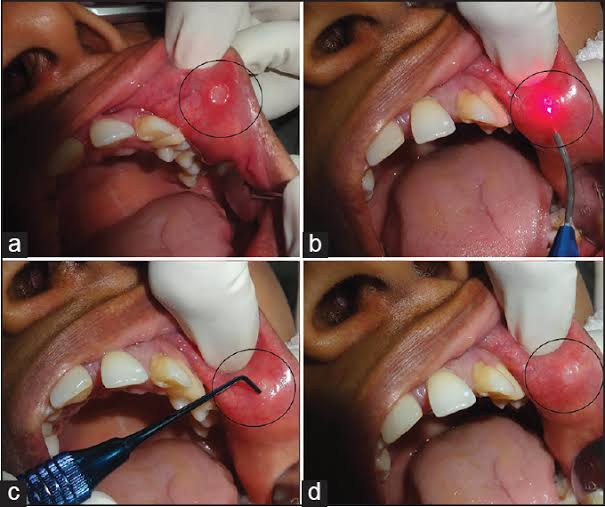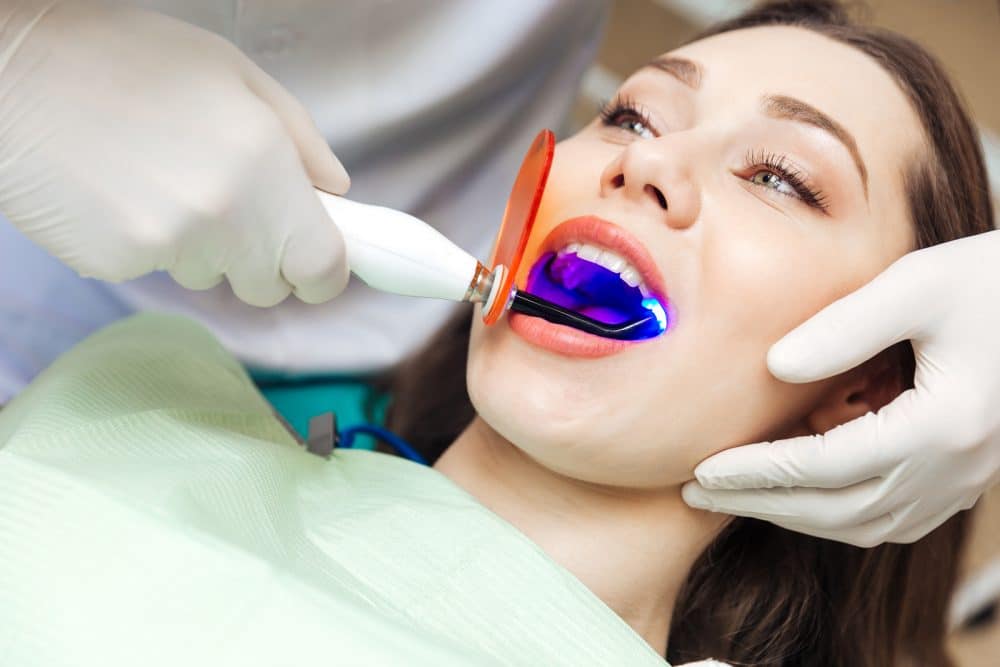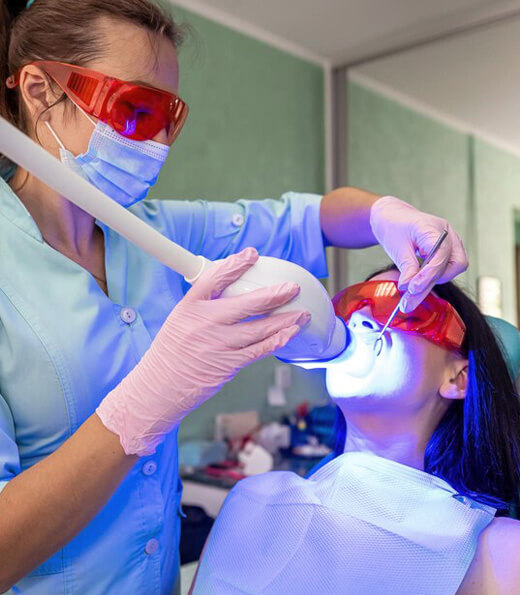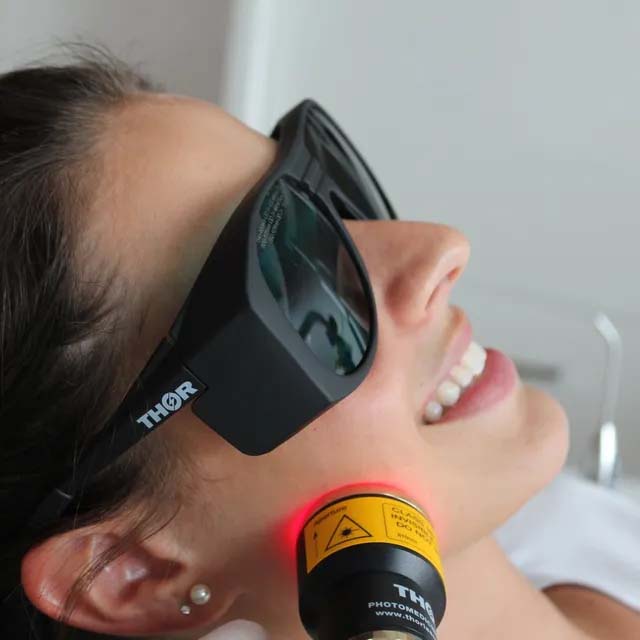Oral Treatment
Oral medicine is a non-surgical treatment process and management of medical disorders of one's mouth. It is the part of dentistry that is responsible for diagnosing and treating diseases originating in the mouth (primary) and general diseases affecting this area (secondary), affecting structures of one's oral cavity.
1. Laser Ulcer Healing
Ulcers, also called mouth sores or canker sores can develop in any region of the mouth. These are usually harmless and are usually self-healing resolving within 7-10 days. However, if your ulcer lasts for more than 15 days, it’s time to get it examined by a dentist.
Ulcers are typically treated by steroid ointments, vitamin supplementation, or correction of the cause (for eg, sharp tip of tooth rubbing against your cheek).
Anti- Inflammatory Low Level Laser therapy is used at our clinic to provide immediate relief from large ulcers which make eating and speaking difficult. The results (pain relief) are immediate as Laser promotes tissue healing and prevents secondary tissue infection.


2. Laser Root Canal Treatment
Laser Root Canal Treatment involves focusing parallel beams of intense light on the infected region. With traditional treatment procedures, there is the possibility of \some bacteria remaining in the canal wall. But with laser beams, all bacteria are eliminated and the region is completely sterile. Local anesthesia is administered to eliminate the possibility of any pain. Many clinics are also utilising ‘Laser-assisted Root Canal Treatment,’ which utilises laser beams only to kill bacteria at the end. We recommends its Laser Root Canal Treatment for reduced treatment time, increased precision and lower risk of reinfection. Most Laser RCT procedures can be undergone in a single sitting. Like its other laser dental procedures, the Laser RCT cost is kept as low as possible to make it affordable for all patients.
3. Laser Crown Lengthening Treatment
Crown Lengthening is a minor surgical procedure that repositions your gum tissue at a lower level on your tooth. It increases the amount of tooth structure available to retain your crown and thus greatly reduces the risk that your crown will lose its cemented connection and decay, or loosen and fall out after years of chewing. It also improves your dentist’s access to the area where your crown meets your tooth, which ensures that your crown will fit properly. The procedure takes approximately one hour and is followed one week later by the removal of your sutures. Since it only requires local anesthesia, most people resume their normal schedule the same day. Your dentist will usually take the impression for your crown six to twelve weeks later.


4. Laser Teeth Whitening Treatment
Laser teeth whitening, which is often called power whitening, is one of the most common ways to solve the problem of discolored teeth. In recent years, this procedure has grown in popularity because it is safe and it will not cause damage to the patient’s gums or the structure of the tooth. Because people are unable to do this procedure within their own homes, they must turn to their dentists. At this point, their dentist will determine which type of whitening procedure is most appropriate for them.
At the beginning of the procedure, the patient has a rubber dam placed inside their mouth so their gums receive protection. Then, a layer of bleaching gel is applied to their teeth that contain natural pH levels. The next step is the gel for the laser, and which causes the mineral accelerant held within it to activate. This causes the whitening gel to transform into oxygen. At this point it covers the tooth’s enamel and allows the whitening gel to become penetrated into the tooth’s lower levels so teeth whiten. It is possible for teeth to look up to between five to six shades brighter with laser whitening. The purpose of the laser is to speed up the process of whitening through its interaction with the gel that causes the whitening to occur. It typically takes about one hour for the procedure.
5. Laser TMJ Therapy & Facial Pains
TMJ laser therapy is a nonsurgical treatment that uses low-level lasers to reduce inflammation and pain in the TMJ. The laser light penetrates the skin and is absorbed by the tissue, causing a biological response that reduces inflammation and pain. This therapy is often used in conjunction with other treatments, such as physical therapy or oral splints. In most cases, it is effective in reducing TMJ symptoms and improving jaw function.
We proud to offer cutting edge laser therapy for TMJ (temporomandibular joint) disorders. Our highly skilled and experienced team provides customized treatment plans that are designed to achieve optimal results. We use the latest technology and techniques, and our state-of-the-art facility is equipped with the most advanced equipment available. If you are looking for an effective and long lasting solution to your TMJ problems, we invite you to visit us for a consultation. We are confident that we can provide you with the relief you need. Contact us today to schedule an appointment.


